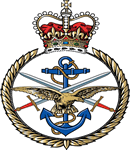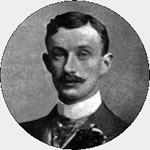Commemorated: | |||
| 1. Memorial: | Cairo New British Protestant Cemetery | ||
| 2. Book: | The (1921) Masonic Roll of Honour 1914-1918 | Pg.125 | |
| 3. Memorial: | The (1940) Scroll - WW1 Roll of Honour | 12A GQS | |
Awards & Titles: | Member of Parliament Justice of the Peace | ||
Family :
Michael Hugh was born at 40 Portman Square, London, the eldest son of the former Chancellor of the Exchequer, Sir Michael Hicks-Beach, and his second wife, Lady Lucy Catherine nee Fortescue. He had one older sister, and two younger.In 1906 Sir Michael was raised to the peerage as Viscount St Aldwyn, of Coln St Aldwyn, in the County of Gloucester, and in 1915 he was further created Viscount Quenington, of Quenington, in the County of Gloucester, and Earl St Aldwyn, of Coln St Aldwyn, in the County of Gloucester. From 1915, Michael Hugh held the courtesy title of Viscount Quenington, as a subsidiary title held by his father.
Viscount Quenington. Member of Parliament for Tewksbury. Son of 1st Earl St. Aldwyn and Countess St. Aldwyn, of Coln St. Aldwyn, Fairford, Glos.;
Husband of the late Viscountess Quenington. Lady Quenington, who died at Cairo 5th March, 1916, is buried by his side.
Education & Career :
Michael Hugh was educated at Eton and came up to Christ Church in 1895. From 1906 until his death, he was Conservative MP for Tewkesbury, and a board member of Lloyds Bank.
"Soon after taking his seat at Westminster, Hicks-Beach made his maiden speech on the land tenure bill, and he took a particular interest in agricultural questions during his time in Parliament, where he was regarded as an effective speaker and generally well-liked. He asked several questions in 1906 regarding the military garrison at St. Helena, where he had served as a captain with the Gloucestershire militia during the Boer War. His battalion was responsible for guarding General Cronje and other troops captured at the Battle of Paardeberg in 1900. When his militia battalion was disbanded under Lord Haldane’s army reorganisation scheme in 1908, Hicks-Beach carried the colours at their final parade.
He subsequently joined the Royal Gloucestershire Hussars yeomanry (RGH). When the First World War began, he was stationed with them in Norfolk, before going out in April 1915 to serve with the Mediterranean Expeditionary Force. The RGH initially went to Egypt, and Hicks-Beach then saw action with them at Chocolate Hill, Gallipoli, in August 1915, being mentioned in dispatches. The RGH returned to Egypt, with Hicks-Beach (also known as Viscount Quenington since his father’s promotion to an earldom) as their adjutant.
On 23 April 1916, Hicks-Beach was involved in severe fighting at Katia, thirty miles from the Suez canal, where German and Turkish troops (some mounted on camels) made a surprise attack. Heavily outnumbered, the British withdrew (although they had their revenge with an aerial attack on the enemy camp the following day). Hicks-Beach was seriously wounded, and according to one account, was rescued by Corporal William Castle, who ‘under heavy Turkish fire placed [him] across his horse and galloped six miles to safety’. However, he died of his wounds.
Unusually for an officer killed overseas, Hicks-Beach was buried alongside his wife, Marjorie, in the Cairo New British Protestant Cemetery. She had gone out to Egypt in late 1915 to visit her husband, accompanied by his sister, Lady Victoria Hicks-Beach. With German U-boats targeting passenger vessels in the Mediterranean, Marjorie and Victoria were forced to stay longer than planned in Cairo. Victoria helped in running the British Empire Nurses’ Club, while Marjorie worked in a canteen for soldiers. Sadly, she contracted typhoid, which led to pneumonia, and died on 4 March 1916, aged 32. Described as ‘a lady of many interests, intellectual and social’, she had taken a leading role in raising money in Gloucestershire for the Red Cross Society.
Victoria remained in Cairo until she was able to secure transport home in mid-May 1916. In the meantime, Hicks-Beach’s father, who had been in poor health for some time, died only a week after his son. Hicks-Beach’s infant son, Michael John (1912-92), therefore succeeded his grandfather as second Earl St Aldwyn. He would later serve as Conservative Chief Whip in the House of Lords, 1958-77. Hicks-Beach also left a five year old daughter, Delia. Poignantly, the Gloucestershire Archives hold the final letter she wrote to her father in Egypt, postmarked 19 April, which he never received."
He is commemorated on the Royal Gloucestershire Hussars memorial in College Green (in front of the West Door; on a plaque in All Saints Church Fittleton; on the Lloyds Bank Lombard Street Memorial and the Cirencester War Memorial. The chancel of St John the Baptist church, Coln St Aldwyn was refurbished in the early 20th century in memory of the 1st Earl St Aldwyn, Michael Hugh, and Marjorie.
Additionally, his name is listed amongst nine names of Freemasons of the Province of Gloucestershire, located at Gloucester Cathedral in the Cloisters, which was reported in the Gloucester Journal 30th October 1920: "WAR MEMORIAL ERECTED IN THE CATHEDRAL. A bronze masonic memorial tablet has recently been erected in Gloucester Cathedral to the memory of Freemasons of the Province of Gloucestershire who fell in the Great War. The tablet which was designed by Mr. N.H. Waller of College Green, Gloucester, and executed by Messrs. Martyn of Cheltenham, ahs been surmounted by masonic emblems, and placed within the cuspated stone panelling of the north wall of the Cloisters- a most appropriate position in view of the fact that the north walk owes its restoration to the munificence of the Freemasons of the county-and it has been deservedly admired by all who have seen it. Nine names are recorded in the order of Lodges to which the deceased respectively belonged."
Service Life:
Campaigns:
- The First World War 1914-1918, World-wide.
| Unit / Ship / Est.: 1st Royal Gloucester Hussars |
"The Gloucestershire Yeomanry Also known as the Royal Gloucestershire Hussars 1/1st August 1914 : in Gloucester. Part of the 1st South Midland Mounted Brigade in 1st Mounted Division. Moved on mobilisation to Bury St Edmunds. Late that month, moved with Brigade to Newbury and transferred to 2nd Mounted Division. Moved to Kings Lynn in November 1914. April 1915 : moved to Egypt, arriving Alexandria 24 April. August 1915 : landed at Gallipoli, dismounted. Landed at ""A"" Beach, Suvla Bay on 18 August. Took part in attack on Chocolate Hill and Hill 112 on 21 August. Early September 1915 : Severe sickness, together with battle casualties, resulted in temporary reorganisation together with 1/1st Warwickshire and 1/1st Worcestershire Yeomanry, to form 1st South Midland Regiment, 1st Composite Mounted Brigade. Continued in trench warfare activities in Green Hill and Chocolate Hill sectors until evacuated to Mudros on 31 October 1915, with a strength of only 81 men of all ranks. December 1915 : withdrew from Gallipoli and returned to Egypt. January 1916 : Brigade became an independent command and was retitled as 5th Mounted Brigade. February 1917 : Brigade transferred to Imperial Mounted Division. June 1917 : Division retitled Australian Mounted Division. August 1918 : brigade retitled 13th Cavalry Brigade and transferred to 5th cavalry Division " |
| Action : Egypt |
Egypt was the base for the Mediterranean Expeditionary Force which was engaged in the region, primarily against the Turks. In the early stages of the war Egypt was threatened by Turkish advances towards Suez which were defeated and the Turks retreated to Palestine. Most of the effort of the MEF was thereafter directed towards operations in Palestine and Syria. Many of those buried and commemorated in Egypt succumbed to wounds, disease or were army victims of naval actions in the region.
At the outbreak of war, he joined the 1/1st Royal Gloucestershire Hussars (RGH) as a 2nd Lieutenant and served with them at Gallipoli as a Troop Officer. He took part in the Yeomanry action at Chocolate Hill on 21 August 1915. After the evacuation the RGH returned to Egypt. He was Mentioned in Dispatches.
His wife, Marjorie, went out to Egypt as a VAD (Voluntary Aid Detachment a voluntary organisation providing field nursing services), and died from typhus in Cairo on 15 March 1916.
Detail :
Michael Hugh died of wounds received when serving as Adjutant in severe fighting with the Turks, some 40 miles from the Suez Canal, near Katia in the Canal Zone. He and his wife are buried at the Cairo New British Protestant Cemetery.
Further information suggests that Hicks-Beach was wounded in an assualt by 2500 Turks on the British line and was rescued by Corporal William Castle who under heavy Turkish fire placed Hicks-Beach across his horse and galloped six miles to safety.
Masonic :
| Type | Lodge Name and No. | Province/District : |
|---|---|---|
| Mother : | St Helena Lodge No. 488 E.C. | St Helena |
| Joined : | Cotteswold No. 592 E.C. | Gloucestershire |
Initiated | Passed | Raised |
29th November 1900 | 13th December 1900 | 21st January 1901 |
Initiated into St. Helena Lodge No. 488 in Jamestown in 1900. He joined Cotteswold Lodge No. 592 16th October 1901.
Past Grand Warden, Past Provincial Grand Warden (Gloucs)
Source :
The project globally acknowledges the following as sources of information for research across the whole database:
- The Commonwealth War Graves Commission
- The (UK) National Archives
- Ancestry.co.uk - Genealogy, Family Trees & Family History online
- ugle.org.uk - The records of the United Grand Lodge of England including the Library and Museum of Freemasonry
Additional Source:
- Founder Researchers : Paul Masters & Mike McCarthy
- Researcher : Bruce Littley

